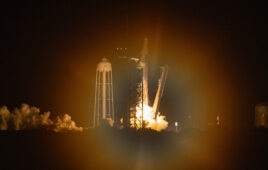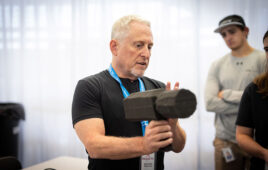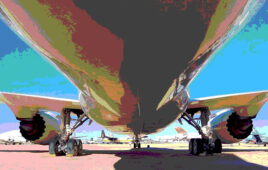Circling hundreds of miles above Earth, weather satellites are working round-the-clock to provide rainfall data that are key to a complex system of global flood prediction.
A new Cornell Univ. study warns that the existing system of space-based rainfall observation satellites requires a serious overhaul. Particularly in many developing countries, satellite-based flood prediction has weak spots, which could lead to major flooding that catches people by surprise. What’s more, four of the 10 dedicated rainfall satellites are past their warranty, further increasing risk of disaster.
The study, published online in Environmental Research Letters, is led by Patrick Reed, professor of civil and environmental engineering, in collaboration with researchers at Princeton Univ. and the Aerospace Corporation.
“It’s important for us to start thinking as a globe about a serious discussion on flood adaptation, and aiding affected populations to reduce their risks,” Reed said. “We want to give people time to evacuate, to make better choices, and to understand their conditions.”
In their study, Reed and colleagues showed that even assuming all 10 satellites are working well and perfectly coordinated, rainfall data still has many deficits across the globe, including in areas vulnerable to flood risk. Removing the four satellites that have surpassed their design life dramatically increases these deficits, possibly leading to high-intensity flood events to go unobserved.
The study was not all bad news. Reed and colleagues also demonstrated that replacing as few as two of the four satellites past their design life could help close these gaps considerably.
In the paper, the researchers call for increased international coordination of satellite replacement. The system now is not very well coordinated; satellite administration varies among the National Oceanic and Atmospheric Administration, the Dept. of Defense, the Japan Aerospace Exploration Agency, the European Space Agency and others, and all have their own specific mission requirements, Reed said.
Broader collaboration is needed to fix the data deficits that are only expected to get worse. Concerns about a dramatic loss of satellite capabilities critical to many areas of Earth sciences have been widely reported since the National Research Council sounded the alarm in 2007, and again in 2012. Reed’s paper is an attempt to quantify the specific consequences of this alarm with respect to rainfall and global flooding.
Source: Cornell Univ.




